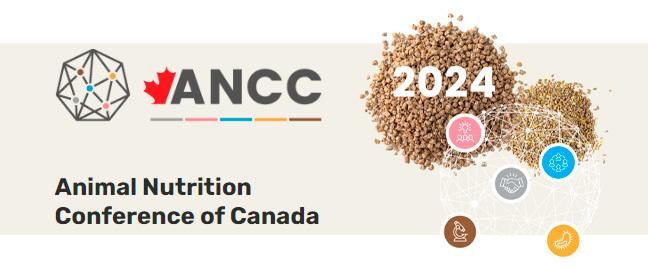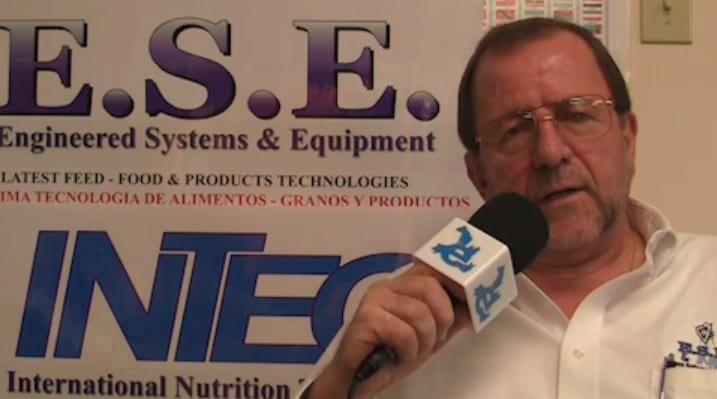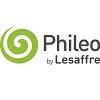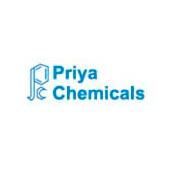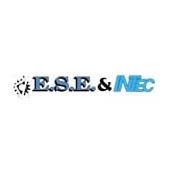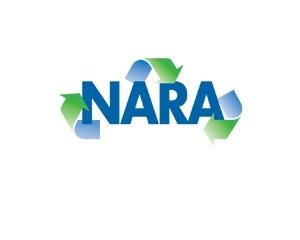Explore all the information on
Feed formulation
Welcome to the page about Feed formulation of Engormix; a source of knowledge on Feed formulation.
_1.jpg&w=3840&q=75)
Frank Ivey (Feed2Gain) shares his experience and insights on diet changes, cost savings in formulations, as well as how the impact of enzymes is evaluated, in this Engormix interview....
Comments : 0
Recommendations: 3
.jpg&w=3840&q=75)
Dr. Piotr Stanislawski shares his experience with Engormix members regarding the use of enzymes in poultry diets and gives his advice on how to do it properly....
Comments : 74
Recommendations: 26
Recommended events
May 14, 2024
Canada - Manitoba - Winnipeg
Introduction: Tropical native legumes are an alternative to cost-intensive conventional feedstuffs. However, the adverse climate in the tropics induces pest and diseases during storage, affecting the nutritional quality of the feedstuff. Ensiling can face this problem and moreover improve digestibility or reduce the content of anti-nutritional factors (ANF). This study inquired the effects of ensiling a mixture of soaked cowpea (CWP) and sorghum (SOR) grains on fermentation...
Comments : 0
Recommendations: 0
Pressure on feed cost is and will remain a decisive factor for profitability and sustainability in pork and poultry production. In the backdrop of soaring inflation, other production costs have escalated. Corollary minimizing the costs associated with production has never been of greater importance. Arguably, feed formulation is a precise science that seek to compute combination of feedstuffs to meet the requirement of an animal at least/best cost. Traditionally, the two primary factors that...
Comments : 1
Recommendations: 3
ARLINGTON, Va. – The Institute for Feed Education and Research (IFEEDER) is excited to announce the launch of its blog, IFEEDER Fodder . For nearly 15 years, IFEEDER has been at the forefront of advancing understanding and trust in sustainable feed and pet food supply chain through research and education. The IFEEDER Fodder blog will serve as a platform for industry professionals,...
Comments : 1
Recommendations: 0
Traditionally, milk fever prevention programs have attempted to directly alter Ca status of dairy cows at calving. Common approaches include feeding pre-fresh dairy cows diets containing anionic salts, restricting dietary Ca, feeding hyper-dietary Ca and administering Ca boluses. There is an abundance of research in regard to the mechanisms associated with dietary Ca alteration, dietary cation-anion difference as related to parathyroid hormone and vitamin D and the role they play in the...
Comments : 0
Recommendations: 0
In Spain, the beef fattening system is an intensive system where calves are commonly housed in partially open barns with straw bedding and 40% of the calves, mainly males, are from dairy origin (surplus calves). These calves are transported by road for long hours (up to 3-5 days) from their dairy origin farms to the rearing farm where these calves are fed low amounts of milk replacer for 6-8 weeks and concentrate and straw ad libitum in separate feeders from very young ages with a resulting...
Comments : 0
Recommendations: 0
Low protein diets have improved nitrogen (N) utilization, but dietary N for the endogenous synthesis of non-essential amino acids (NEAA) may be limiting. Inclusion of a non-protein nitrogen (NPN) may improve utilization of essential amino acids (EAA). A N-balance study was conducted, where 90 growing barrows were assigned to 1 of 10 dietary treatments. Diets contained no ammonium phosphate (NAP; EAA-N:TN of 0.56) or were supplemented with 1.7% ammonium phosphate (AP; EAA-N:TN of 0.50) with...
Comments : 0
Recommendations: 0
Pharmacological levels of Zn in early nursery pig diets reduce the instance of post-weaning diarrhea and improve performance. However, there are growing concerns with pharmacological levels of Zn and much attention has been directed toward strategies to lower dietary Zn without negatively impacting performance. Diet acid-binding capacity-4 (ABC-4) could be an option to formulate low Zn diets. Dietary ABC-4 is the hydrochloric acid required to reach a pH of 4. The young pig has a limited...
Comments : 0
Recommendations: 0
I. INTRODUCTION The continuous genetic improvements are increasing the first commercial egg size produced and extending the production life of the layer hens worldwide. These improvements are related to what happens at rearing and at the start of the production. Early studies showed that while approximately 60 to 75% of the calcium destined for the shell comes directly from intestinal absorption (Driggers and Comar, 1949), up to 36% could be traced to bones (Mueller et al., 1964)....
Comments : 0
Recommendations: 0
Zinc is an essential trace mineral in broiler nutrition. However, in commercial practice it is often fed above requirements to prevent any deficiencies. To prevent deficiencies, Zinc hydroxychloride (HTM) (IntelliBond®, Trouw Nutrition, Netherlands) provides versatility to optimise the producer’s trace mineral program and allow them to feed levels lower than those commercially used today in the form of sulfate trace minerals (STM). Raw data of nine studies was combined into...
Comments : 0
Recommendations: 0
The formation of a viscous gut content in the small intestine due to the presence of non-starch polysaccharides in feed can markedly restrict efficient nutrient digestion in poultry. This adverse effect may be mediated through the supplementation of exogenous feed additives. The present study investigated the effects of carbohydrases and a buffered formic acid on growth performance and ileal digesta viscosity in broiler chickens fed a wheat- or maize diet. A 2 × 4 factorial arrangement...
Comments : 0
Recommendations: 0
Reduced protein (RP) diets have received increasing interest in poultry nutrition due to the potential benefits in feed cost and environmental footprint (Liu et al., 2021). Understanding the order of limiting amino acids (AA) in RP diets is critical to ensure requirements are met cost effectively. To date, only the first three limiting AA (including lysine [Lys], methionine [Met], and threonine [Thr]) have been demonstrated in RP layer diets, while the order of the next most limiting AA is...
Comments : 0
Recommendations: 0
Diego Martínez (University of Arkansas) An energy system is needed to optimize feed formulation and influence economics and sustainability. This study assessed the sensitivity of productive energy (PE) and classic net energy (CNE) to BW gain (BWG), feed conversion ratio (FCR), and net energy for gain (NEg) and maintenance (NEm), and developed models to predict BWG, FCR, and protein accretion (PAC). 1920 chicks in 96 pens were assigned to one...
Comments : 1
Recommendations: 0
Nelson Ruiz (Nelson Ruiz Nutrition LLC) A set of 24 solvent extracted commercial soybean meal (CSBM) samples, which corresponded to the same lots of CSBM used in the field, were evaluated. The CSBM were from different origins (Argentina, Bolivia, Paraguay, Trinidad & Tobago, U.S.). The objective herein was to evaluate the relationship between KOH protein solubility (KOHPS, a measurement of overprocessing) and trypsin inhibitor activity (TIA, a...
Comments : 2
Recommendations: 1
.jpg&w=3840&q=75)
Diego Martínez (University of Arkansas) explains how productive energy is a better predictor of performance, body weight gain, feed conversion and protein accretion, among other factors, in this Engormix interview during IPPE 2024 in Atlanta, USA....
Comments : 0
Recommendations: 1
Mike Persia (Virginia Tech) Experiments were conducted to determine the bioavailability of fine ground aragonite (FGA) using 0-14 d old broilers and to determine the use of FGA on performance, eggshell quality, and tibia ash (TA) of laying hens from 28-56 wks. In experiment 1, 450 as hatched Ross 708 broilers were fed a basal diet without either LS or FGA containing 0.35% Ca and LS and FGA additions resulting in 0.43, 0.51, 0.59, and 0.67% Ca. Body...
Comments : 0
Recommendations: 0
.jpg&w=3840&q=75)
Nelson Ruiz (Nelson Ruiz Nutrition LLC) explains how to deal with both cases and offers his insights and recommendations, in this Engormix interview during IPPE 2024 in Atlanta, USA....
Comments : 0
Recommendations: 0
.jpg&w=3840&q=75)
Mike Persia (Virginia Tech) explains the characteristics of aragonite, how it is harvested, and its potential as a calcium source for poultry nutrition, in this Engormix interview during IPPE 2024 in Atlanta, USA....
Comments : 0
Recommendations: 0
.jpg&w=3840&q=75)
Lara Moody (IFEEDER Executive Director) gives recommendations on important reductions and measurements to accomplish industry goals, in this Engormix interview during IPPE 2024 in Atlanta, USA....
Comments : 0
Recommendations: 0


